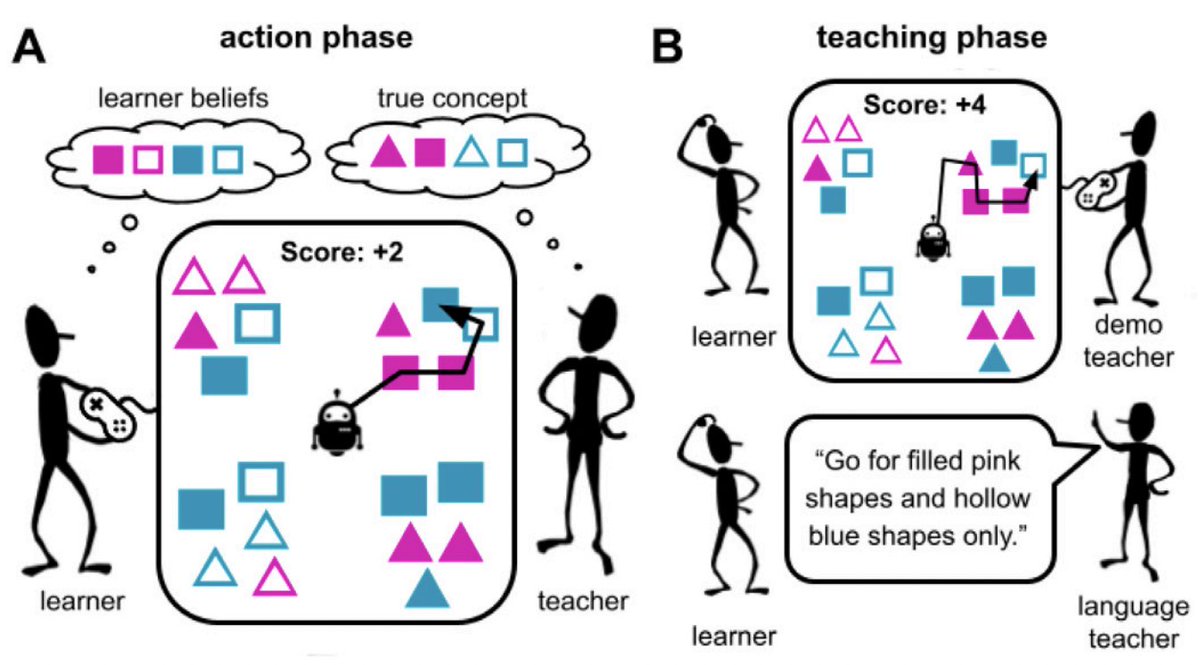
Humans use a wide variety of teaching strategies. To teach you chess, I could *demonstrate* how rooks move (dragging one across the board) or use *language* to explain ("this piece moves in straight lines"). Our new work in #cognition compares modalities!
authors.elsevier.com/a/1gCBc2Hx2pjBM
authors.elsevier.com/a/1gCBc2Hx2pjBM
We developed a collaborative teaching game where participants taught Boolean concepts using these modalities: either moving an avatar to demonstrate the concept, or explaining it in natural language. 

How effective is each modality as concepts get more complex? Both worked for simpler concepts, but language conveyed even relatively complex ones. And with both– but especially demonstrations–- learners acquired a *simpler* version of the true concept. 

So *why* is language better at communicating complex concepts? We hypothesized that language allows teachers to directly reference abstract features (like “blue triangle”) whereas demonstrations can only interact with concrete objects (a specific blue triangle).
To test this hypothesis, our second experiment *removed* the abstract features from the teacher’s interface. Language teachers in this “locations only” condition resorted to using spatial language, while demonstration teachers were largely unaffected. 

In fact, “locations only” language teaching performed *worse* than demonstration teaching! This supports the idea that language—but not demonstration—is highly reliant on shared abstractions. 

Understanding the effectiveness of different teaching modalities is crucial to study cultural evolution and improve machine learning. We’re excited that systematic comparisons like this can support richer insight into how and when humans use them!
Of course, this work is only a small step in this direction-- there's a lot more to do. We’d love to hear your thoughts! And as always, huge thanks to coauthors @mark_ho_ @hawkrobe @cocosci_lab
• • •
Missing some Tweet in this thread? You can try to
force a refresh




